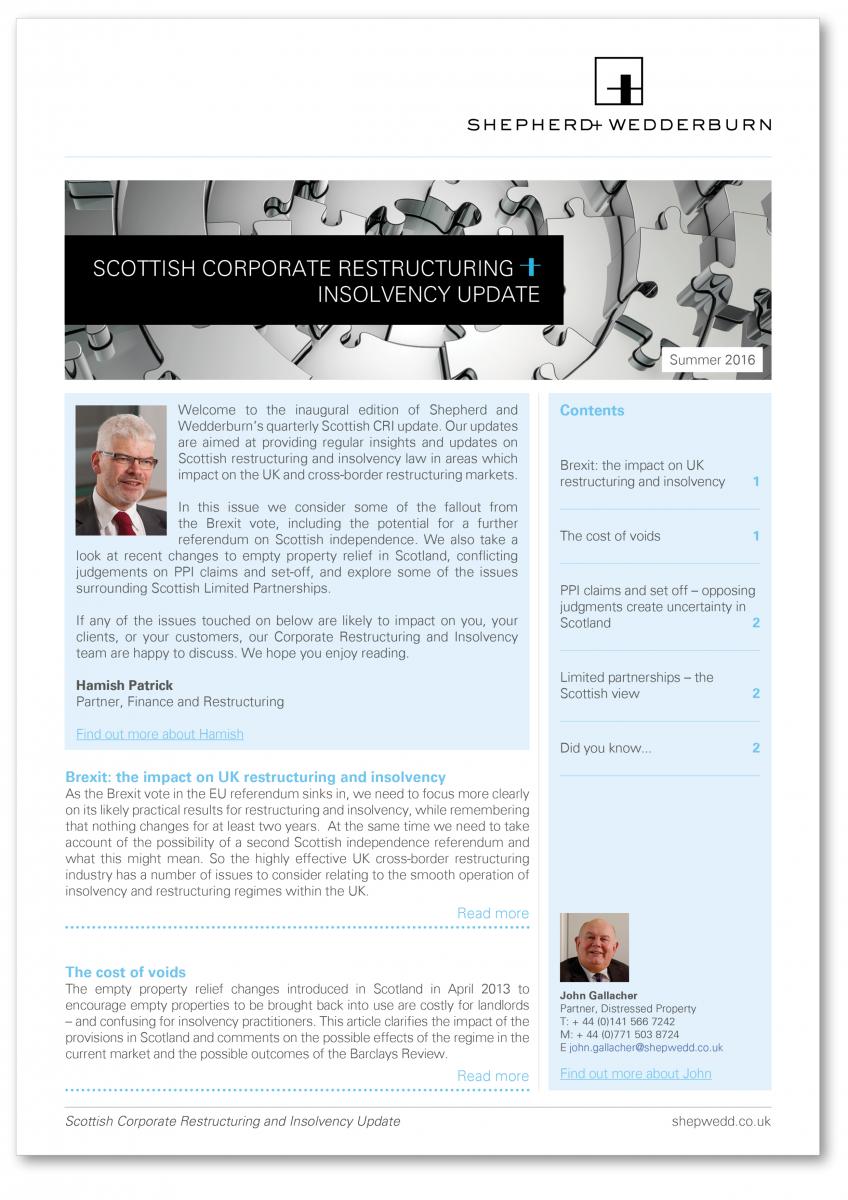
Date published: 25 July 2016
Business Rates: The Changing Landscape of Empty Property Relief in Scotland
Introduction In March this year the Scottish Government announced the appointment of Ken Barclay, a former chairman of RBS to lead a wide ranging review of Business Rates in Scotland. This announcement has been roundly welcomed by the CBI, RICS and others who seek a simpler, fairer and more competitive business rates system which, in the view of some, will not operate as a disincentive to invest in Scottish Real Estate. Whilst this fundamental review of business rates is taking place, the Scottish business community continues to struggle with the current empty property relief regime.
The Scottish Government proposed changes to the empty property relief regime in April 2013 with the objective of bringing empty properties back into use. According to the RICS, in their submission in December 2015 to the Scottish Government Empty Property Review, the Scottish Government has not monitored the impact of the 2013 changes or if the objective of bringing properties back into use is on track. Despite this apparent lack of transparency on the success or otherwise of the April 2013 changes the Scottish Government has, once again, changed the levels of empty property relief from 1 April 2016.
Where the empty property is industrial 100% relief is allowed for the first three months only and 10% thereafter. Empty industrial properties previously benefitted from 100% relief. Where the empty property is standard (commercial) 50% relief is allowed for the first three months and 10% thereafter. Previously such properties benefitted from 100% relief for the first three months and 10% thereafter.
The changes in these relief levels are likely to significantly increase liabilities for landlords of both industrial and non-industrial properties particularly those with vacant industrial properties in their portfolio where they previously enjoyed 100% and now, after the initial three month period, will have 10% relief. That liability will require to be met unless the ratepayer qualifies for another of the available reliefs namely, small business, renewable energy, listed buildings, charities and insolvency reliefs for so long as such reliefs remain available.
Availability of insolvency relief Insolvency relief is available for any rates liability due on empty properties to an insolvency practitioner appointed as trustee under a trust deed for creditors or appointed pursuant to an award of sequestration (bankruptcy) where the empty property is owned by an individual (and also, due to the application of the personal bankruptcy regime under Scots law, to trustees appointed on the bankruptcy of unincorporated partnerships and limited partnerships which are regarded as separate legal entities under Scots law). In addition insolvency relief is available where a company or limited liability partnership is in liquidation or, from 1 April 2008, in administration but not where it is in receivership.
Since the introduction of the Enterprise Act 2002 there are fewer and fewer receiverships but those that do will not be entitled to claim insolvency relief and any liability for rates will accrue as an unsecured liability of the company in receivership.
If the objective of bringing empty properties back into use fails there is a danger that it might accelerate the insolvency of certain of the “zombie” companies whose sole or principal asset is a vacant industrial building where they are unable to pay the rates due on the property as they fall due for payment.
There may also be opportunities for owners of vacant industrial property within their portfolio to undertake a restructure of their portfolio with a view to ring fencing the rating liability within single purpose vehicle companies to avoid a dilution on returns on other (occupied) properties.
Conclusion With little sign of improvement in the speculative Scottish industrial development market, coupled with the Brexit effect over the next few months, the prospect of an increased rates liability might just tip the balance towards insolvency at a time when the Scottish Government is looking to encourage sustainable economic growth. If ever there was a time for a review of business rates in Scotland, that time is now. Business leaders await the outcome of the forthcoming review with more than a passing interest.
Click here to read our latest Scottish Corporate Restructuring and Insolvency Update.
To find out more contact us here












